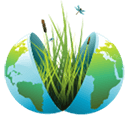
Waubesa Wetlands
About
GENERAL INFORMATION
Criteria:
- Listed on more than one “valuable wetland” list by natural resource agencies or nongovernment organizations.
- Protects biological diverse wetland flora, fauna and/or their habitat
- Supports significant numbers of wetland-dependent fauna, such as water birds or fish
- Rare or unique wetland type within its own biogeographical region. (Meeting this criteria would include, but is not limited to, wetlands with unique hydrology or chemistry that make it rare within its own region)
The 500-acre lakeshore wetland complex is a "Wetland Gem" that includes an immense open-water spring that discharges clean water into Lake Waubesa and additonal springs that support a 30-acre species-rich fen, in addition to sedge meadows and shallow marshes. It is unique and highly valued for biodivesity support, conservation of the adjacent lake, research and education. Since the 1970s, it has served as an icon for understanding wetland formation and hundreds of students have benefited from studies of the wetlands, supervised by Prof. Cal DeWitt. It was chosen by the Wisconsin Wetlands Association as a state "Wetland Gem" and designated as a State Natural Area by the Wisconsin Department of Natural Resources. For more information see -- Bedford, B., Zimmerman, E. H., & Zimmerman, J. H. (1974). The Wetlands of Dane County, Wisconsin. Dane County Regional Planning Commission.
Exemplary Ecosystem Services:
- Maintains ecological connectivity/cohesion
- Aesthetic/cultural heritage value/ provisioning
- Recreation (birdwatching, ecotourism)
- Flood storage/mitigation
- Carbon storage
- Water quality improvement
- Education
CONSERVATION STATUS AND THREATS
Conservation status: State/Province/Regional Protection
Adjacent Land Use: Agricultural (cropland, orchards, greenhouse)
Approximate natural buffer width: > 100 ft
Other information: The wetland is part of a township that has ~500 ha of privately owned land with conservation easements. This extremely unusual landscape helps protect the wetlands from development. A remaining threat is nutrient-rich inflow from the adjacent upstream township.
If Other: TNC + conservation easements
Is there any other information that should be conveyed regarding your nomination of this wetland? Bigholt Deep Spring, shown in the photo, dilutes nutrients in the southern portion of L. Waubesa and keeps algal blooms offshore. This spring is itself a rare treasure.
ECOLOGY
Approximate size: 200 ha
General wetland characterization:
- Inland Fresh Meadow
- Inland Shallow Fresh Marsh
- Inland Deep Fresh Marsh
- Inland Open Fresh Water
- Inland Fresh Shrub Swamp
Adjacent Water Bod(ies): Lake
Name of body of water: Lake Waubesa (southwest shore)
Surficial Geology: Formed after the Wisconsin glacier retreated 14,000 years ago, leaving behind glacial till in old stream valleys; lake sediments accumulated (10-30 m thick) below the current wetland; peat accumulated (1.5-2.5 m thick).
Soils: Wetland soil is fibrous peat overlaying lake sediments.
FLORA AND FAUNA
Dominant flora: A floating mat of cattails and sedges lines the lakeshore and marsh plants line the streams. Calcareous fen areas feature a diversity of plants including grass-of-parnassus, Riddell’s goldenrod, northern bog aster, sage willow, common lake sedge, tussock sedge, woollyfruit sedge, swamp loosestrife, American water horehound and numerous asters.
Unique flora: the rare lesser fringed gentian
Dominant fauna: many species of waterfowl and other migrating birds including sandhill crane, green heron, marsh wren, sedge wren, blue-winged teal, green-winged teal, American coot, blue-gray gnatcatcher, common yellowthroat, great blue heron and willow flycatcher. Also important spawning habitat for many Lake Waubesa fishes.
Rare fauna: Rare and unusual birds include least bittern and American bittern.
ADDITIONAL INFORMATION
Waubesa Wetlands in Scientific Context
Simulating Postglacial Wetland Formation: A Quantitative Reconstruction of Waubesa Marsh
Hydrology and Chronology of a Peat Mound in Dane County, Southern Wisconsin
Wisconsin Wetlands Association - Wetland Gems
Wisconsin State Natural Areas Program - Waubesa Wetlands
Images

